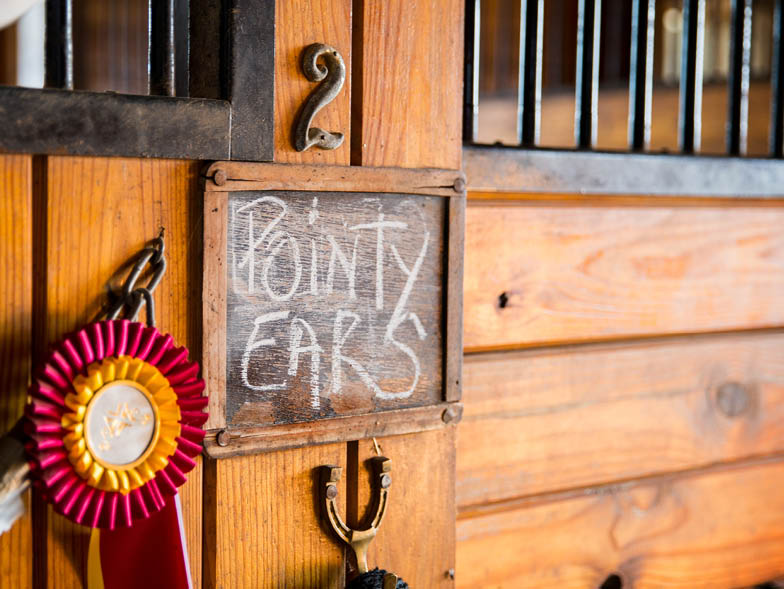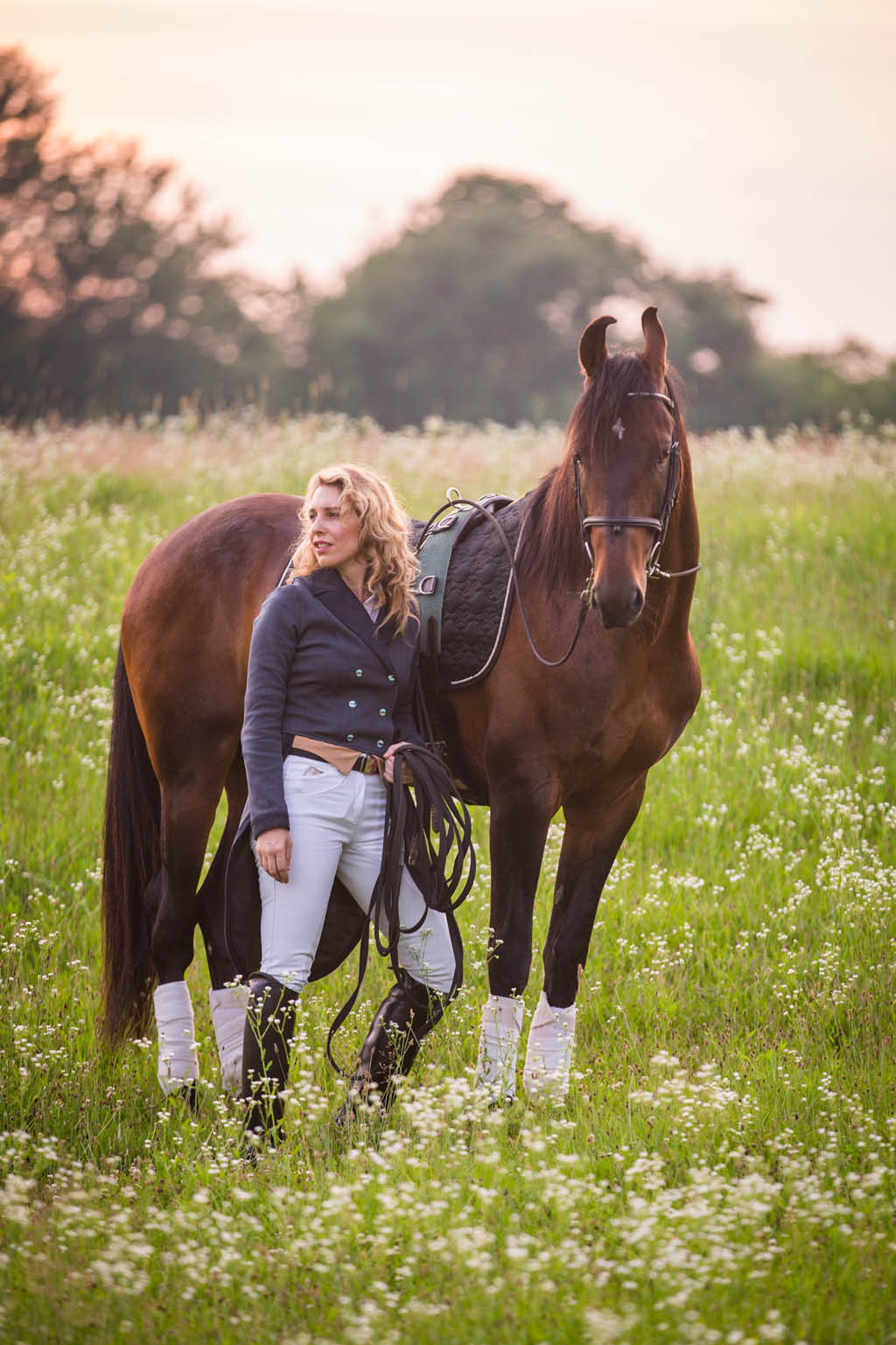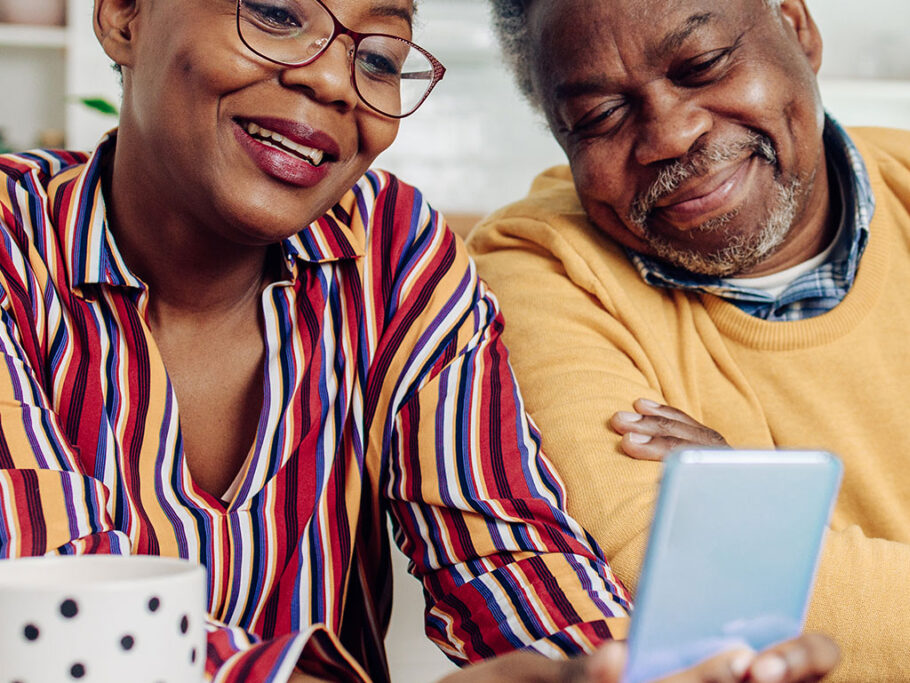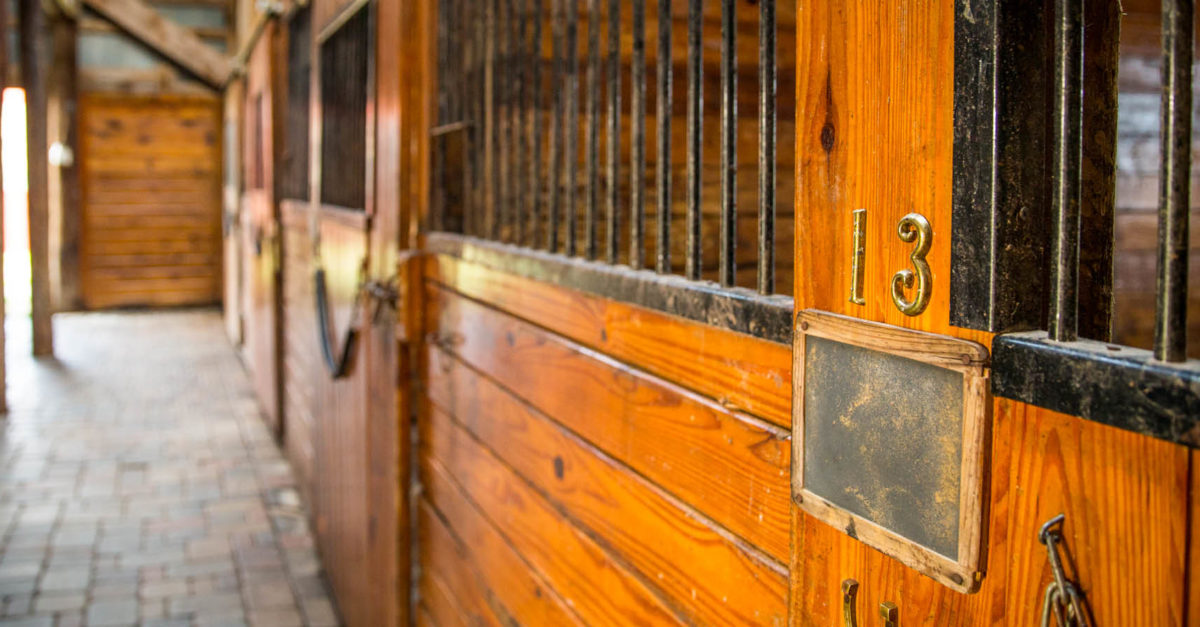The Art of Horsemanship: Meet Dr. Maria Katsamanis
How did your interest in horses come about?
I have been drawn to horses for as long as I can remember. My earliest memories were of learning English by reading horse-related novels like The Black Stallion and books on horse tack and care. It was the only thing that motivated me to learn English. As a child, I learned about the story of Pegasus, the winged horse of Greek mythology. Every night, i would imagine that he would fly to my window and let me hop on him for a ride.
Our connection to the horse is so primal and transcends time. I often consider that I might have been born with a random genetic predisposition for love of the equine.
What is it about these creatures that draws you in?
The sense of togetherness I feel when I am near them is unexplainable. To be atop a horse, where his feet become yours, is the ultimate form of oneness. You are like a centaur. Horses evoke bravery, loyalty, and patience. They compel me to cultivate qualities that I feel elevate my consciousness as a human being.
How did you turn your interest in horses into a training career?
There is a Native American adage that says, “Learning is remembering what we already know.” I think my genes or history knew how to be with horses. It was just a matter of time, in this lifetime, for me to be brave enough, step off the sidelines, and step into it as a career.

How has your equestrian interest developed into something more than a hobby?
The equestrian lifestyle, while it has its own hardships, always appealed to me because of the intense connection we have with the earth. I respect and give dignity to the earth by not taking more than what I need, and I approach my time with horses in the same way.
What do you love the most about working with horses?
I am addicted to seeing how a horse reaches its full potential. Like an architect sees a building already constructed way before it is built, so it is with me: I already see the magnificence of a horse months before the transformation occurs.
Talk about reviving the art of horsemanship. Why is this so important?
Today, most of us do not need the horse. The horse is no longer the necessity of days ago—a tool. Having a horse is a luxury. We are fortunate to have horses in our lives. I feel strongly that we are responsible for ensuring, when we are on them and with them, that we are interacting with them in a way that preserves their welfare and dignity. Passing on horsemanship as an art form, a moving art form that is timeless and elegant, ensures that the horse remains the ultimate masterpiece. I have coauthored a book, written many articles in publications with constituents around the world, and continue to provide hands-on education on horsemanship skills via the clinics organized around the globe, advocating for the preservation of this moving art form.
How would you describe the ideal relationship between a person and a horse?
The ideal relationship is one in which both horse and person are physically and mentally comfortable. Anytime one is forced or feels mandated to be someplace, there will be resistance. Resentment builds, both in the muscle memory down to the cellular level and in the psyche of an animal (humans included) when we are forced to be together. I facilitate the ideal relationship by always checking in to see where my partner is mentally. I encourage riding and being with horses in a way that allows them to be themselves and where we become the facilitators of their mental and physical comfort.

You talk about becoming one with your horse. Describe the first moment you realized you and a horse connected as one:
The first time I realized I had that connection occurred when my horse and I were in the water swimming. I realized that he was just as scared as I was; I needed him, and he also needed me.
What does it mean to merge art and science together to harness the ultimate connection with a horse?
Before Picasso could create his masterpieces, he had to understand the mechanics of the different brushstrokes and paint he was going to use. He had to know the “science” and practical underpinnings of his craft. Competence breeds confidence. Understanding the why and how of things that happen opens up the possibility that something special can indeed occur. Only then can the art and refinement we seek be accessible to us.
As a horse trainer, would you say that your work is rooted more in training the horse, or in training the person’s perspective on the horse-human relationship?
When that which we seek is oneness, invariably, change has to occur for both the horse and the human. Generally speaking, in Western culture, we approach something as a task or as a problem that needs solving. Often, people approach me to “fix” their horse—the horse being the “identified patient.” However, it is in the wholeness and seeking oneness that we realize how our horses invite us to grow, to be higher beings every day.

You are trained in French and Greek riding traditions. Can you describe what these traditions entail? Is there a commonality across the different schools of thought?
As a native of Greece, I grew up hearing the very rich equestrian history of my forefathers—tales of battles fought on horseback, of legendary bonds such as that of Alexander the Great and his horse Bucephalus. The Greek part of my equestrian heritage is more philosophical than theoretical. Much of that philosophy is embodied in one of the first texts ever written on horsemanship, by a Greek cavalryman named Xenophon. The text, while simple, encapsulates knowledge that transcends time. The French tradition has provided me with the theoretical and technical tools to create the masterpiece I visualize in every horse with which I work. A great horseman has both a solid foundation and a toolbox flexible enough to address the individual profile of every horse.
What are some of the aspects of good horsemanship?
As in any relationship, the first aspect is connection—you are coming to your horse deeply desiring his welfare, so you must ask not what he can do for you, but what you can do for him. The second aspect is kindness—it is easier to come to the horse with kindness if you are practicing it already with your fellow humans. Practice makes perfect! And last is classical—good horsemanship draws on the classics. Many of our equestrian forefathers have discussed protocols for the physical development of a horse that ensure his viability and comfort. These individuals were considered masters of the equestrian art and have defined some dos and dont’s. Good horsemanship means looking to what has worked in the past, techniques that have endured through time.
What is the magic formula that helps you and others to establish a connection with their horses?
The most important element of the magic formula is you. You have to see yourself as an alchemist, a magician. If you can imagine it, you can create it! The rest of the ingredients are found in the book I coauthored, The Alchemy of Lightness.
What is the biggest misconception people have about horses and training in general?
Horses are individuals, just like people. No two children, for example, are the same. And yet, we have standard age-based expectations for horses and even evaluate them on whether they are meeting those expectations. Unfortunately, many great horses get passed by because they do not fit a mold or a training deadline. Great training means that one understands that a horse’s conformation and disposition are unique . . . and that one must take one’s time. Patience is a virtue that horses appreciate. You get there faster if you take it slower.
How do you identify and work toward keeping the best interests of the horse in mind?
Horses are pure. They are always waiting for you. Our job is to come ready, open—present in the moment. When one is present, meaning fully available to the horse in the now, all of a sudden one is able to hear and see things about his comfort more readily.
What role do emotions play when making a connection with a horse?
Emotion is everything! You have to feel what you want, and keep that feeling for everything, not just for horses.
What does the ultimate dance between rider and horse look like?
The ultimate dance between horse and rider is the same as the ultimate relationship. It is that which we seek, on a deep level, with another: oneness. It is no different from watching a couple dancing together and being mesmerized by the performance.
How do you become one with a horse? How do you know when you have achieved that oneness?
If one has to ask if he or she has achieved oneness, then it has not happened. And that not only regards horses.
Tell us about your horses in general. How many do you currently care for or own?
While I train and work with different breeds, the only horse that I own is a six-year-old Marwari stallion named Bahadurshah, which means “brave one” in Hindi. Every trainer needs a teacher, and he is certainly that for me. There is a wisdom in that horse that seems to transcend time. Lessons that I gather from my time with him help me grow in my professional work, and I translate my discoveries to other horses in my training program.
Tell us about the origins and rarity of this breed:
The Marwari horse, the heart-shaped-eared horse of India, is the rarest horse in the world. Marwaris descend from the antiquities and certainly look the part. They originated in Western India, in what was the Marwar region. They are largely found in Rajasthan and in the Punjab regions of India. There are about twenty-five Marwari horses that live outside of India. Currently, the Indian government has a ban on the export of horses abroad.

What made you interested in this particular horse?
An Indian colleague of mine had spoken to me about these horses, about their loyalty to the rider and their physical beauty. It was only when I met them in person that I realized that it was not just their heartshaped ears that stole my heart. I recognized their sensitivity, nobility, and intelligence instantly as something out of the antiquities.
What was your reaction to the breed when you first saw them in person?
They looked to me like mythical creatures. Their heart-shaped ears are what one first notices, but I quickly became fascinated by the nuances of their eyes and expressions. They are quite expressive. Even their horse whinny seemed different—kind of like a whinny with an accent.
Through your interaction with the breed, how do you think these Marwari horses compare to other breeds?
Wikipedia describes them as having tenacious and unpredictable temperaments. As the ancestor of the war horses of the Maharaja, the present-day Marwari is formidable. One only has to whisper, and they are there. I find that a delightful quality of the breed. Like many sensitive, light breeds, they do best when a handler asks and does not demand.
As a horse trainer, what is your typical day like?
My day typically starts early. Once the horses have been fed their breakfast, I begin to prepare my first horse of the day. Visitors who come from abroad to stay and work with me are often puzzled by a daily routine that to them seems mundane, a huge contrast to the glamour that comes from traveling as a clinician. I love traveling and helping people with their horses, but there is a peace and contentment about coming back home to my own herd at my farm base, Amwell Ridge Farm, in Ringoes, New Jersey. Day to day, every day, I stay in the same mind-set. To an outsider, the minutiae of what I am doing seems boring, like watching a spider make a web, until one day it all falls into place and the horse is dancing.
Do you have any hobbies or interests outside of horses?
Playing the piano, traveling, offshore fishing, sitting in a rocking chair, painting, and walking the earth—especially hay fields in the fall.
For more info, visit mariakatsamanis.com.























